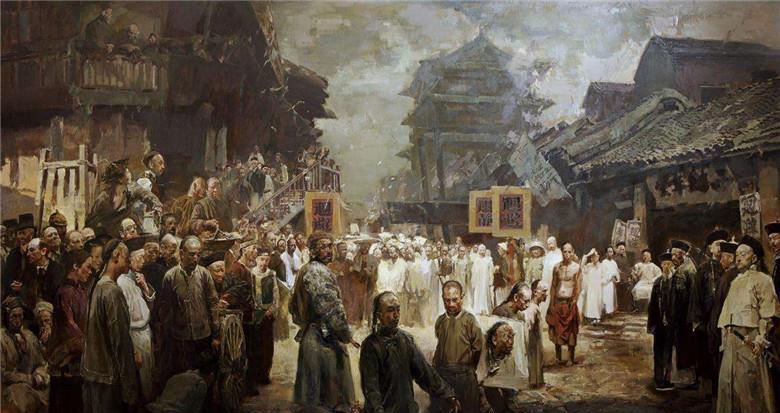We all know that in costume dramas, after the ancient officials sentenced prisoners to death, they would always set the time of execution as "asking for beheading after autumn", and they would choose to execute the death penalty after "three o'clock in the afternoon". Is there any specific reason? Don't worry, please listen to the editor's slow introduction.

The ancients have a simple belief in nature, in their view, spring is the season of the new birth of all things, the execution of prisoners is not only unlucky, but also may affect the harvest, Dong Zhongshu's theory of heavenly induction also emphasizes that the emperor's behavior should be in line with the four seasons, spring and summer should be the season of rewards, autumn and winter is the time to ask for beheading. In fact, since the Spring and Autumn Period, the mainland has had the saying that "rewards are in spring and summer, punishment is in autumn and winter", and dynasties in Chinese history generally used autumn and winter punishments, except for criminals who plotted rebellion and rebellion and were executed in time, other death row prisoners were to be carried out after the autumn frost fell to the winter solstice.
After the Sui and Tang dynasties, serious and important cases generally needed to be reviewed by the central government, and capital crimes were even more repeated many times before being decided by the emperor himself. In ancient times, the review and execution of the death penalty was also quite strict, and some sloppy death penalty plots played in TV dramas were basically impossible to appear. The time of the question and slash in this period also depends on the specific situation of the audit, and it is not necessarily "asked after the autumn".
In the Ming and Qing dynasties, the "Autumn Trial", "Autumn Trial" and "Dynasty Trial" systems were introduced again. Every year, on the tenth day after the frost falls, the Three Laws Division and high-ranking officials above the three pins will try death row inmates near Gyeonggi, called "'Dynasty Trial'"; In mid-August every year, the review of death penalty cases in various provinces is called "autumn trial", and after the trial and autumn trial, the death penalty cases are divided into four categories: factual, suspended, deferred, and retained heirs, except for the fact that the death penalty is executed after the emperor is executed, the other three categories can be exempted from the death penalty.
Of course, in addition to the autumn, the ancients paid more attention to the three o'clock in the afternoon. Three o'clock in the afternoon is equivalent to about 12 noon, which is the shortest moment of shadow on the ground. In the eyes of the ancients, this is the time of day when the yang qi is the heaviest, and the heinous felons choose to execute at this moment, suppressing it with exuberant yang qi, so that even ghosts cannot do it after death. This should also be the most important reason why the ancient people chose to execute at "three o'clock in the afternoon". In summary, the ancients' emphasis on the death penalty has both superstitious reasons and temporal considerations, and more reflects people's thinking about life and nature.